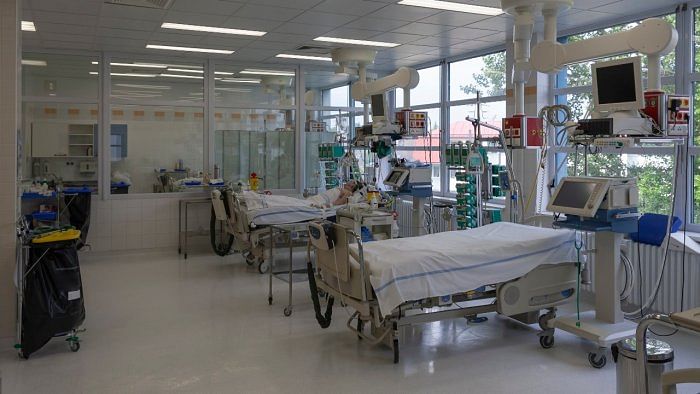
The all-pervading goal of healthcare is to ensure quality of life and sustainable clinical outcomes for patients. Historically, the popular perception is that not-for-profit hospitals invariably address healthcare needs and safeguard patient interests more effectively compared to private healthcare hospitals, which are essentially profit-driven. The premise of making not-for-profit hospitals tax-free rests on the logic that profits will be ploughed back to enhance facilities and improve outcomes, and not distributed as dividends.
I put forth here a contrarian view based on my experience. If a for-profit hospital does not distribute dividends, it makes a bigger, better, and more sustainable impact on the overall healthcare segment of a country. As we all know, close to 76% of India’s healthcare needs are provided by private hospitals.
I recall my talk presented at the Harvard Business School, which did a detailed case study on HCG’s ethos, essence and value proposition. I had raised a simple question: “What is the difference between for-profit and not-for-profit?” Elaborating, I had also spelt out the key differences between the two: One of them is that not-for-profit hospital trustees don’t take any personal remuneration. The money is raised mainly through grants and donations, and bank loans. These grants don’t come about in a consistent manner, and bank loans often prove exorbitant. This uncertainty puts enormous pressure on the not-for-profit entities. Since the tax laws governing donations are ambiguous, and tax exemptions are limited, donations are also not guaranteed.
On the expense side, not-for-profit entities, just like private hospitals, need to acquire real estate and infrastructure to build a quality hospital. Money is vital for employing doctors, nurses, paramedical and support staff as well as to buy medical equipment. Some of it, no doubt, could come via donations. Many not-for-profit and medical college-run hospitals charge patients almost at par with what the private hospitals charge.
The dependence on grants and donations puts a natural limit as to how much a not-for-profit hospital can grow in terms of clinical excellence, technology and network.
Talking of for-profit hospitals, they build quality infrastructure, acquire disruptive technology, pay competitive salaries to doctors and other staff members. Having said that, the biggest difference in my view is that private hospitals can raise funds from private equity funds, high net-worth individuals, and angel investors -- all these private investors in turn expect a return on their investment. They seek consistent value appreciation, and at some point, they make informed decisions based on the growth in the value of their investment. They either make an exit from the investment after having earned the desired profit margin or continue with the investment as before. They may even pick up a bigger stake if growth is promising.
The benefits of this financially-powered agile system are pivotal. While the system ensures unflinching fiscal responsibility and proper accounting of revenue and expenditure, it also adopts a growth-centric approach to healthcare through efficiencies of scale. More importantly, it helps doctors meet their aspirations of ushering in emerging technology, gain specialisation and depth of knowledge in key areas of research and development, and move up the value chain of medical science and service. The greatest beneficiary of this setup is of course the patient who gets the best, high-quality treatment at the right time.
Now, if the private hospital does not distribute any dividend, then there remains hardly any difference on the issue of ensuring the larger good of patients and their health and well-being. HCG is a case in point which does not distribute dividends.
In my view, a private hospital which ploughs back reserves and surpluses back into the system to strengthen its core, maintains a high quality of treatment and facilities, uses the best of technology, ensures that cost-consciousness is not in conflict with quality consciousness, and treats patients as their biggest stakeholders, presents a safe, secure, and sustainable model of healthcare thus creating a far better social impact on a larger scale compared to not-for-profit hospitals.
(The writer is executive chairman, Healthcare Global Enterprises Limited)